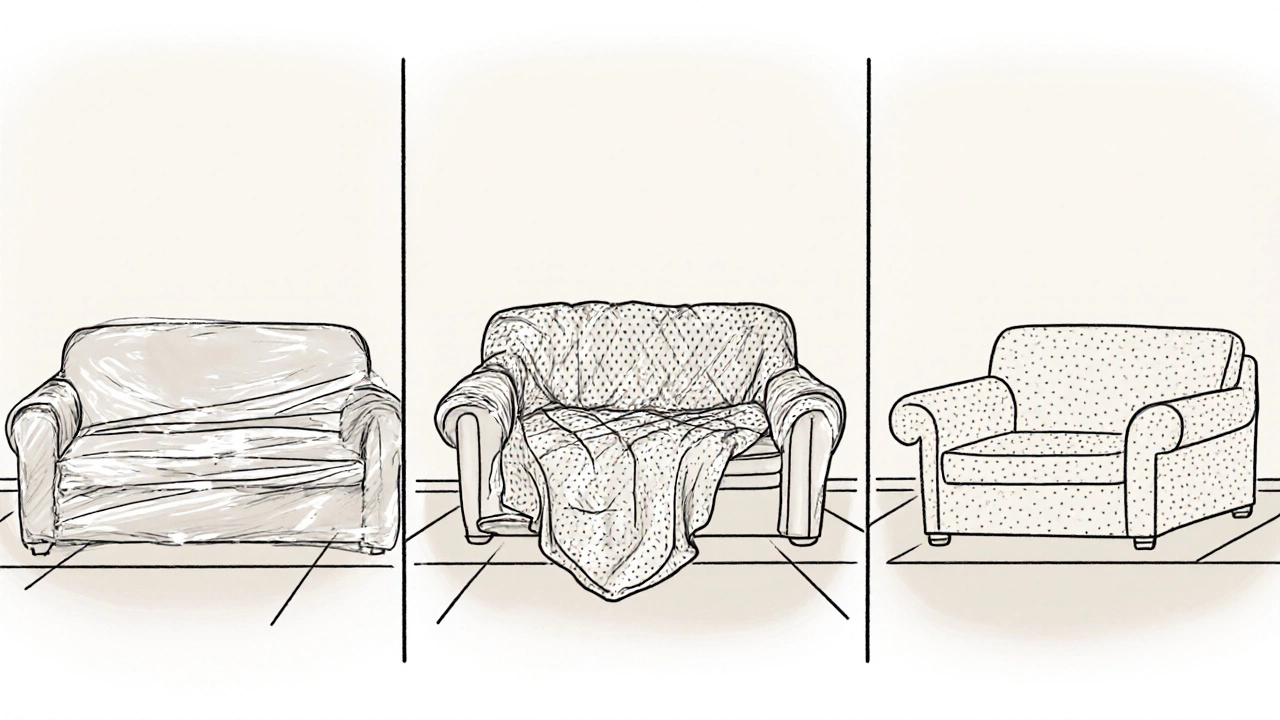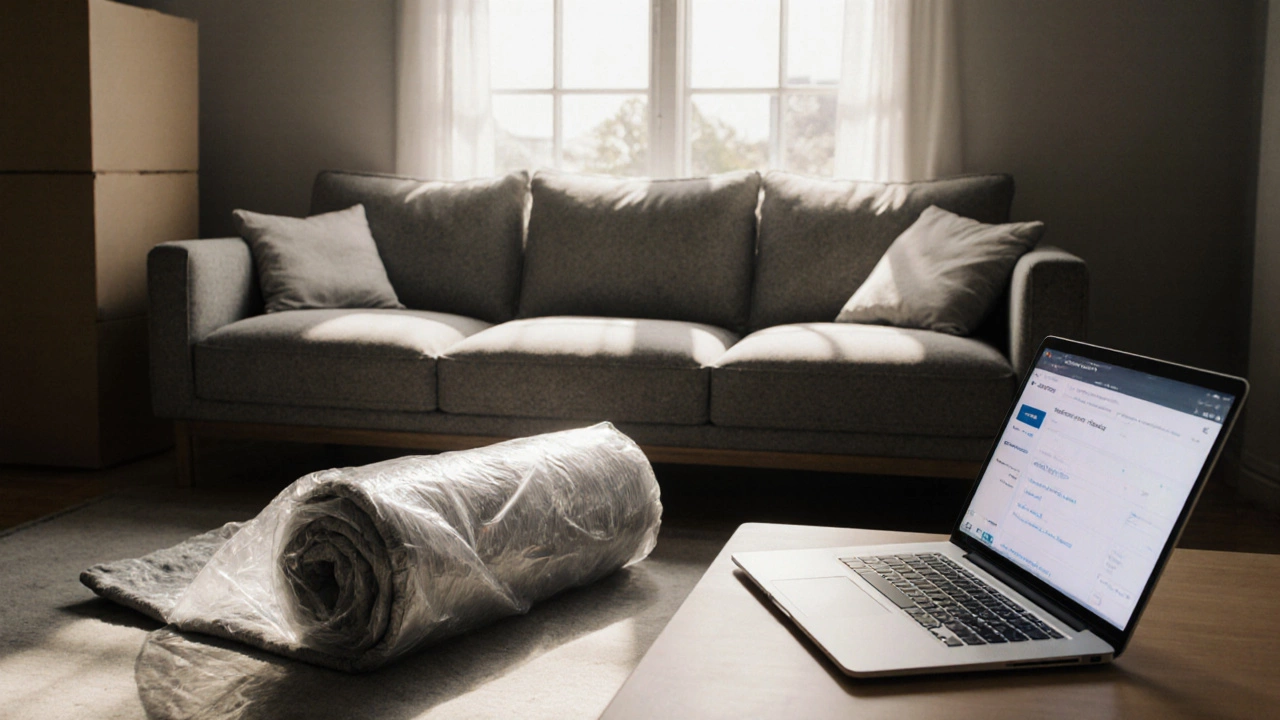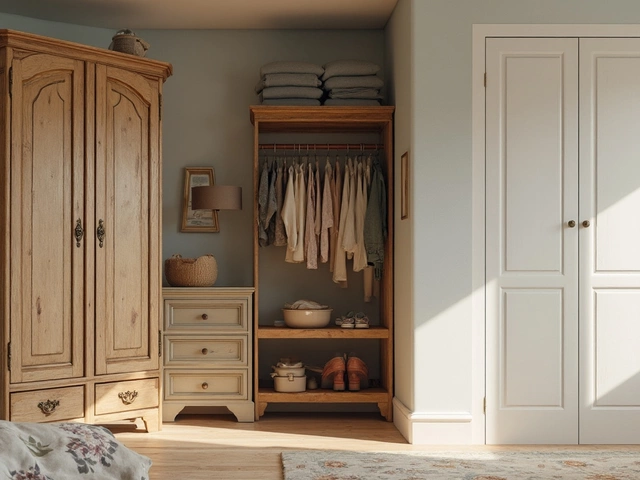Couch Storage Decision Helper
Enter your storage details and click "Analyze Storage Safety" to get recommendations.
Got a couch that needs to sit idle for months? You’re probably wondering if sealing it in plastic will keep it safe, or if you’re setting yourself up for mold, tears, and a pricey clean‑up. In this guide we’ll break down the real benefits and hidden risks of couch storage, compare your wrapping options, and walk you through a foolproof step‑by‑step method that protects the upholstery without trapping moisture.
Understanding the Risks of Storing a Couch
When a couch is a large upholstered furniture piece that often features fabric, leather or synthetic material sits unused, three main enemies show up: moisture, dust & pests, and physical damage. If you seal a couch in an airtight film, you might stop dust but you also trap any existing humidity. Over weeks, that damp environment becomes a breeding ground for mold, mildew, and an unpleasant odor. On the other hand, leaving it exposed invites dust mites, beetles, and rodent chewing.
Common Wrapping Options Compared
| Material | Breathability | Protection Level | Cost (NZD) | Ease of Use |
|---|---|---|---|---|
| Plastic wrap thin polyethylene film that creates a moisture barrier | Low - traps moisture | Good against dust, poor against mold | 10‑20 per roll | Simple, but needs careful sealing |
| Moving blankets thick, quilted fabric used by movers for cushioning | High - breathable | Excellent against scratches, moderate against dust | 30‑50 each | Requires straps or tape |
| Furniture cover fabric or vinyl slipcover designed for long‑term storage | Medium - often perforated | Balanced protection, includes zippered entry | 40‑70 per cover | Fits snugly, zip closes |
When Plastic Is OK - And When It’s a Bad Idea
Use plastic wrap when you need a quick, cheap barrier against dust and you can control the environment (e.g., a climate‑controlled unit with low humidity). It works well for short‑term moves (under a month) or when you’ll add a breathable layer on top. Avoid it for long‑term storage in basements or garages where humidity the amount of moisture in the air that can cause mold fluctuates.
If you can’t guarantee a dry space, opt for a furniture cover that allows air circulation while shielding against dust or a combination of moving blankets plus a zippered cover.

Step‑by‑Step: Safely Wrapping Your Couch for Long‑Term Storage
- Clean the upholstery. Vacuum thoroughly, spot‑clean any stains, and let it dry completely. Moisture left behind will be trapped later.
- Inspect for damage. Repair loose stitching or small tears now. Use a upholstery repair kit a set of fabric glue, needle, and thread for minor fixes if needed.
- Choose your protective layer. For most New Zealand climates, a moving blanket provides cushioning and breathability works best. Lay it flat on the floor and slide the couch onto it.
- Secure the blanket. Wrap the blanket around the couch, overlap the seams, and fasten with packing tape or reusable straps. Make sure the seam doesn’t press into the fabric.
- Add a breathable cover. Slip a fitted furniture cover over the blanket. Zip it up, leaving a small vent at the back to let air circulate.
- Optional moisture guard. If you’re storing in a unit with pest control measures that keep insects and rodents away plan, place silica gel packets inside the cover to absorb any stray humidity.
- Place the couch in the storage unit. Position it away from walls and floor vents. If the unit is a storage unit a rented space that can be climate‑controlled or standard, aim for the center where temperature stays stable.
- Check periodically. Every 2‑3 months, open the cover briefly to let fresh air in and inspect for any signs of moisture or pests.
Cost, Eco‑Friendliness & Practical Tips
- Budget breakdown: Moving blankets ($30 each) + a fitted cover ($50) + tape/straps ($10) = around $90 total. Plastic wrap alone is cheaper but may cost more in potential repairs later.
- Eco angle: Re‑using blankets from a previous move, or renting them from a local moving company, cuts waste. Plastic wrap is single‑use and adds to landfill.
- Temperature matters: Keep the storage space between 15‑25°C (59‑77°F). Extreme heat softens adhesives in plastic and speeds up mold growth.
- Pest prevention: Sprinkle a light layer of diatomaceous earth around the base of the storage unit; it deters beetles without harming the couch.
Quick Checklist Before You Seal the Deal
- Clean and dry the couch completely.
- Repair any visible fabric damage.
- Choose breathable protection (moving blanket + cover).
- Secure with tape or reusable straps.
- Store in a climate‑controlled unit if possible.
- Add silica gel or moisture absorbers for extra safety.
- Inspect every few months.
Frequently Asked Questions
Can I use ordinary household plastic (like cling film) on my couch?
Household cling film is too thin and doesn’t seal well enough for a large piece of furniture. It will trap moisture just as badly, and the seams often peel off. If you must use plastic, opt for heavy‑duty stretch wrap that’s at least 4‑mil thick and seal all seams with strong tape.
What if I only have a garage with no climate control?
In an unconditioned garage, moisture swings are common. Prioritize breathable protection (moving blankets + fitted cover) and place a dehumidifier inside a sealed container next to the couch. Check the couch every month for any damp spots.
How long can a couch stay wrapped in plastic before damage occurs?
Generally, no more than 4‑6 weeks in a non‑climate‑controlled environment. Beyond that, the risk of mold and mildew rises sharply. In a dry, temperature‑stable storage, you might stretch it to 3‑4 months, but always inspect regularly.
Is it worth renting a furniture cover instead of buying one?
If you only need a cover for a one‑time move, renting can save money and reduce waste. Many moving companies in Auckland offer 24‑hour rentals for around $15‑$20. Just make sure the cover fits snugly and is made of breathable material.
Should I elevate the couch off the floor?
Yes. Using pallets or sturdy wooden blocks keeps the couch away from potential floor moisture and makes air circulation easier. It also protects the legs from scratches.





